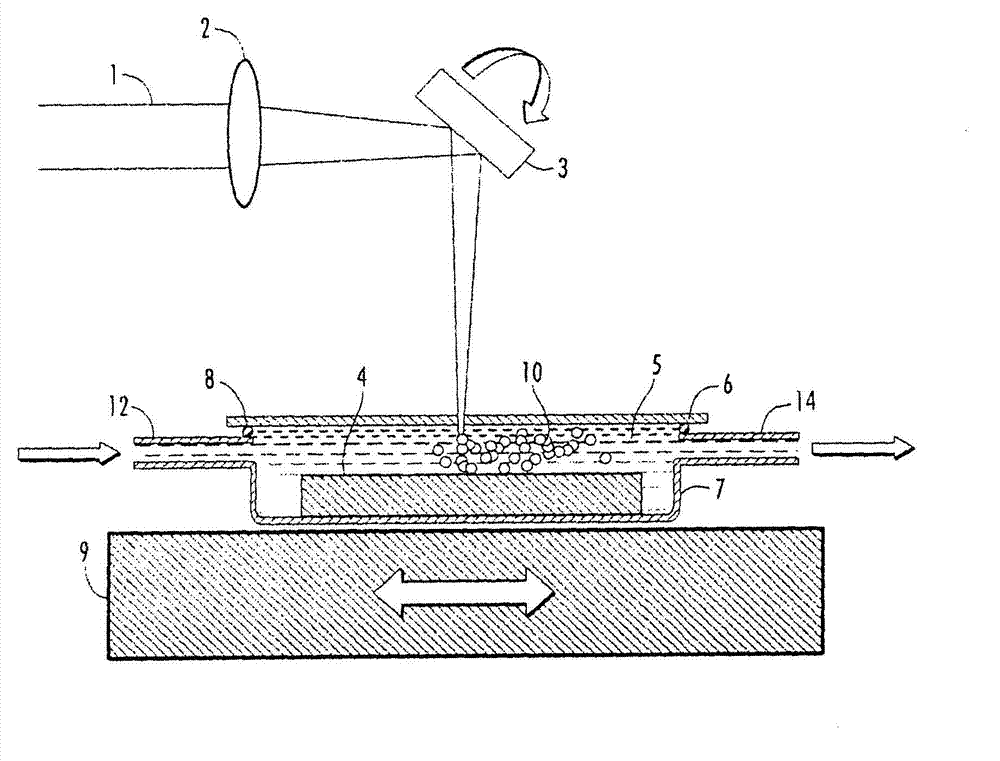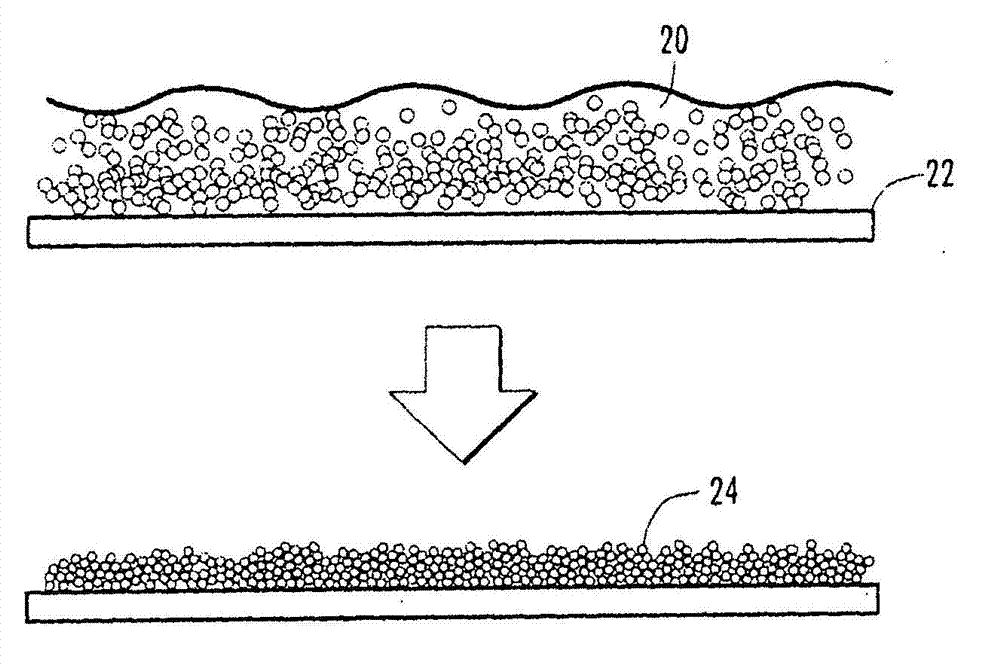Producing nanoparticle solutions based on pulsed laser ablation
A nanoparticle and pulse technology, applied in the field of preparing thin-film solar cells, can solve problems such as improper composition and impurities
- Summary
- Abstract
- Description
- Claims
- Application Information
AI Technical Summary
Problems solved by technology
Method used
Image
Examples
Embodiment Construction
[0021] figure 1 Schematic illustration of a laser-based system for the preparation of nanoparticles of complex compounds in liquids according to the invention. In one embodiment, a laser beam 1 is received from a pulsed laser source (not shown) and focused with a lens 2 . The source of the laser beam 1 can be a seed laser or any other laser source known in the art as long as it has the pulse duration, repetition rate and power level as described below. The focused laser beam 1 is then directed from the lens 2 to a guide mechanism 3 for controlling the movement of the laser beam 1 . The guiding mechanism 3 may be any guiding mechanism known in the art, including for example piezo-mirrors, acousto-optic deflectors, rotating polygons, vibrating mirrors and prisms. The guiding mechanism 3 is preferably a vibrating mirror 3 capable of controlling and rapidly moving the laser beam 1 . The guide 3 guides the laser beam 1 towards the target 4 . The target 4 is made of the desired ...
PUM
| Property | Measurement | Unit |
|---|---|---|
| wavelength | aaaaa | aaaaa |
| wavelength | aaaaa | aaaaa |
| band gap | aaaaa | aaaaa |
Abstract
Description
Claims
Application Information
 Login to View More
Login to View More - R&D
- Intellectual Property
- Life Sciences
- Materials
- Tech Scout
- Unparalleled Data Quality
- Higher Quality Content
- 60% Fewer Hallucinations
Browse by: Latest US Patents, China's latest patents, Technical Efficacy Thesaurus, Application Domain, Technology Topic, Popular Technical Reports.
© 2025 PatSnap. All rights reserved.Legal|Privacy policy|Modern Slavery Act Transparency Statement|Sitemap|About US| Contact US: help@patsnap.com



